 |
|
|
|
| |
This is a picture coming back from shore to board the Leo. USS Leo received five battle stars for service in Korean War and two battle stars in World War II.
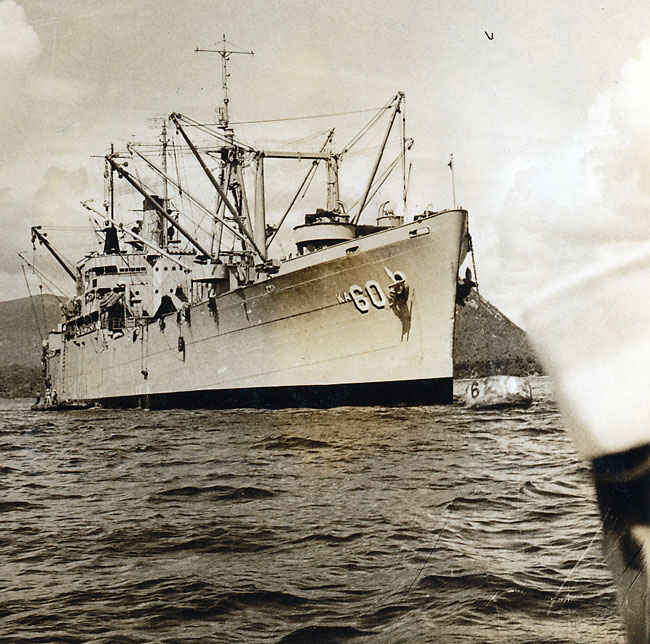
|
The front page of the USS Princeton Aircraft carrier on July 29, 1952. All the large ships at this time created a daily newspaper distributed to the crew. Reactivated with the outbreak of hostilities in Korea fifteen months later, Princeton decommissioned from WWII refreshed, she joined TF 77 off the Korean coast, her planes and pilots making possible the jet combat air patrols over Korea.
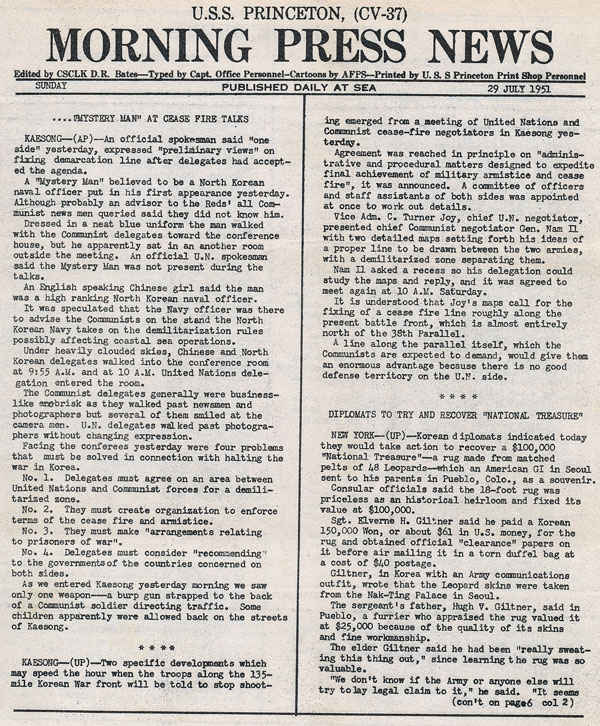
|
USS Walke Destroyer. While steaming off the Korean coast with TF 77, Walke struck a floating mine, which severely damaged her hull, killed 26 men, and wounded another 40 sailors.
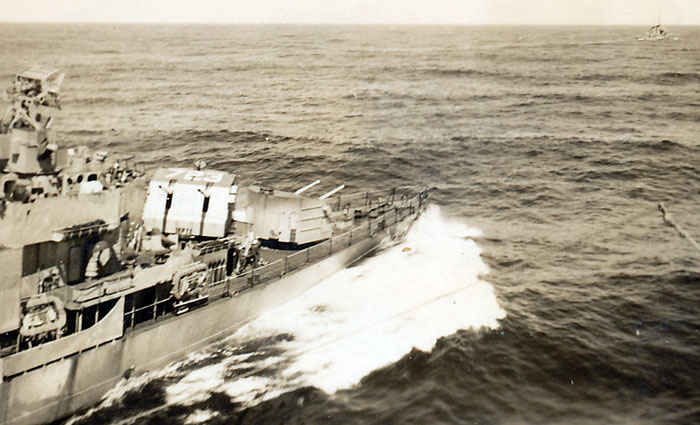
|
| |
USS St. Paul (Baltimore-class cruiser). Saint Paul earned one battle star for WW II service, eight battle stars for Korean service, and nine battle stars for Vietnam service.
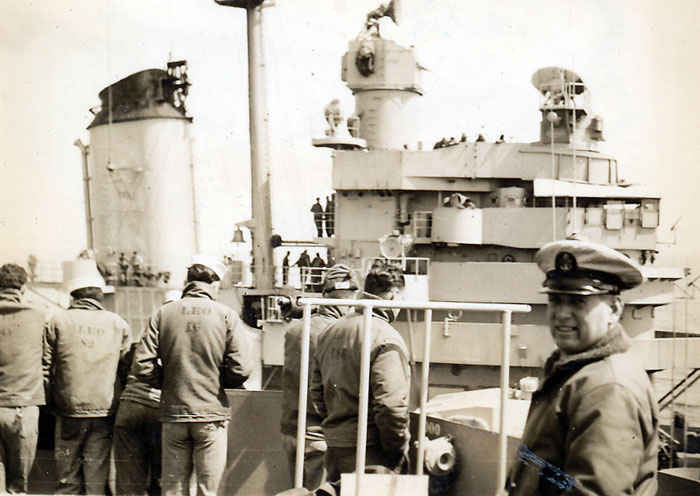
|
USS New Jersey (Iowa-class), among the four completed battleships New Jersey earned the most battle stars for her combat actions, and was the only battleship of the class to have served a tour of duty in Vietnam.
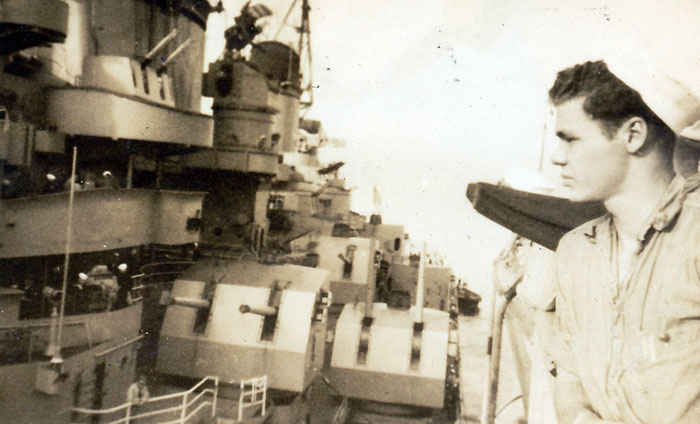
|
USS Missouri is in the far background. Missouri (Iowa-class) is the final battleship to be built by the United States and is notable for being the site of the surrender of Japan at the end of World War II.
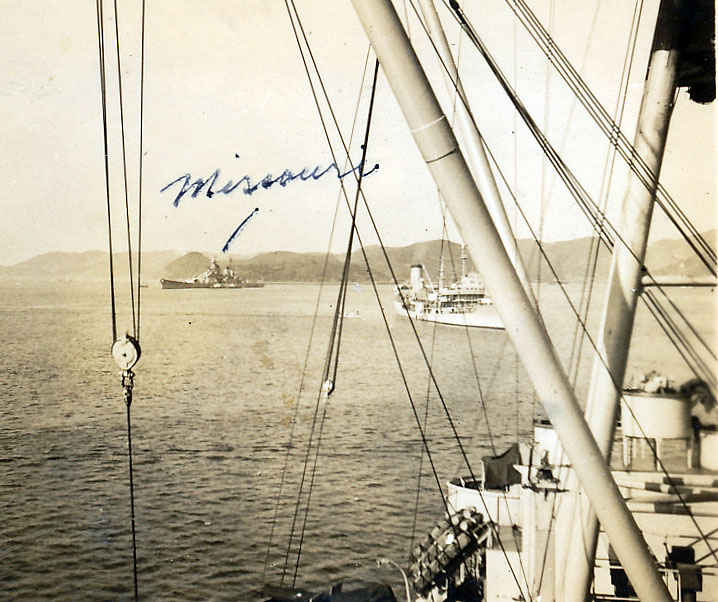
|
| |
This is the minesweeper that always trolleys in front of the Leo making sure there were no mines. If a mine was found, the minesweeper would shoot the mine. The Leo she spent 1951 operating between Sasebo, Japan and Korea. Leo operated between Sasebo and various rendezvous points in Japan.
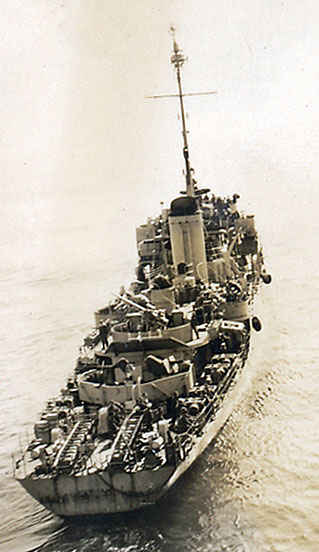
|
Picture of Sasebo, Japan. The tide comes in at night. When war broke out in Korea Sasebo became the main launching point for the United Nations and the U.S. Forces. Millions of tons of supplies flowed through Sasebo on their way to Korea. The number of Americans in Sasebo grew overnight and some 100 warships and freighters came through per day.
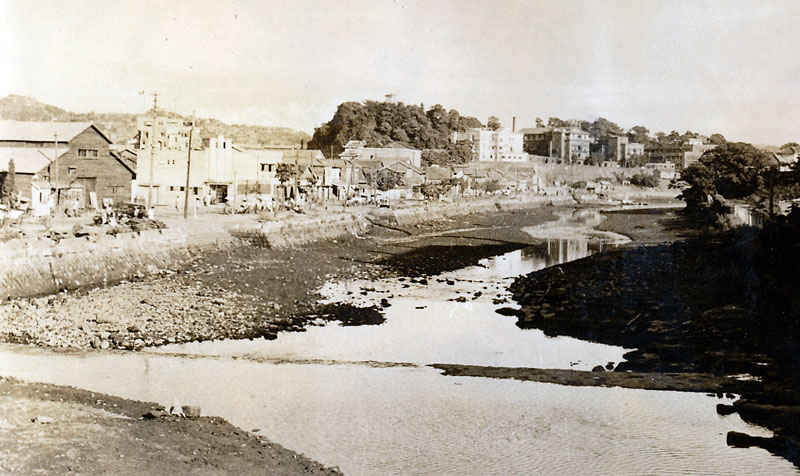
|
How would you like to get this in the mail? My grandfather had already served in the Army during World War II and only joined the Navy reserve during peacetime because he was recruited heavily for his accounting skills, which paid him a lot for the time. He had no idea what he was in for when the Korean War broke out and he received this in the mail.

|
| |
USS Leo first assignment in World War II was for the assault on Iwo Jima with Amphibious TF 51. After the assualt she evacuated casualties.

|
USS Leo (AKA-60), an Andromeda-class attack cargo ship, was named for the constellation Leo. USS Leo served as a commissioned ship for over a decade. Leo is the only ship of the United States Navy to hold this name.
,_an_Andromeda.jpg)
|
Loading bombs from the USS Leo to an Aircraft carrier. The men are standing on the Aircraft carrier and the USS Leo is in the background. If you look to the top left, you will see where my grandfather spent most of his time on the radio while ammunition was being loaded onto ships.
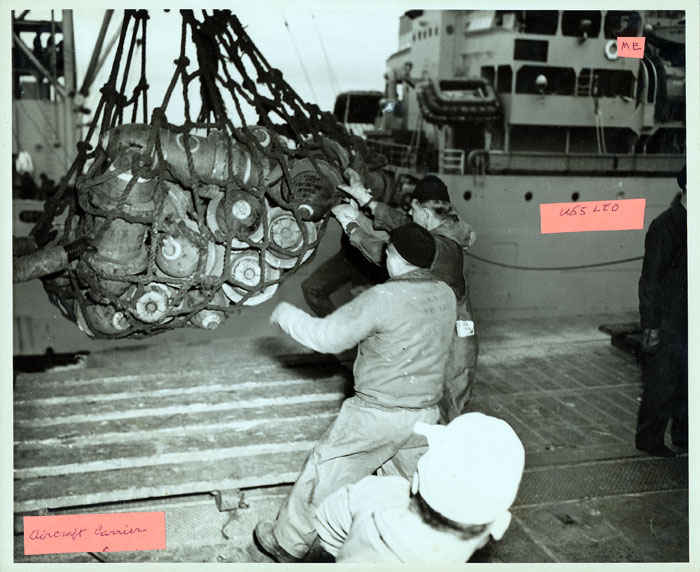
|
| |
This is a picture of a Army duck boat coming alongside the USS Leo. I thought it was amazing that a duck boat would come out to a large ship like the Leo. If you ever get a change to go to Boston, you need to take a ride on the Duck boat, the company has authentic World War II duck boats like the one seen in this picture.
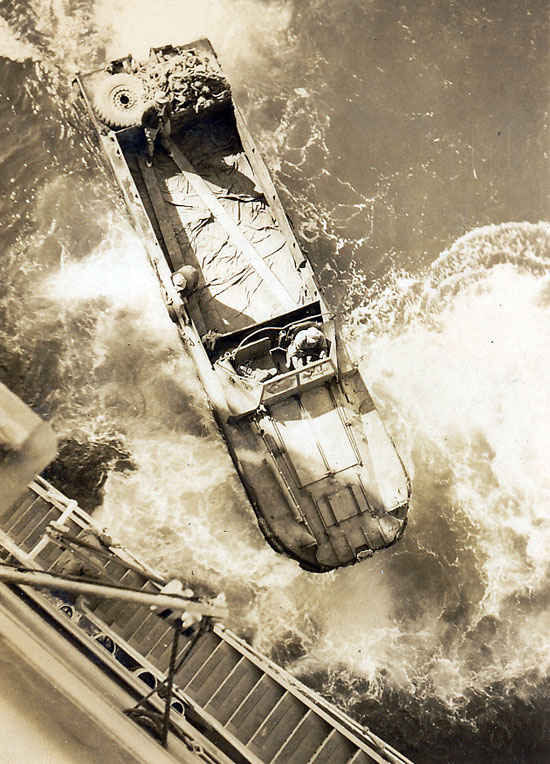
|
Draft roster from October 26, 1950. On the day my grandfather had to report to active duty there was a huge snow storm and he almost did not make the train from Lima to Detroit. Not reporting means one goes to jail but apparently the people who did not report never had to go Korea.
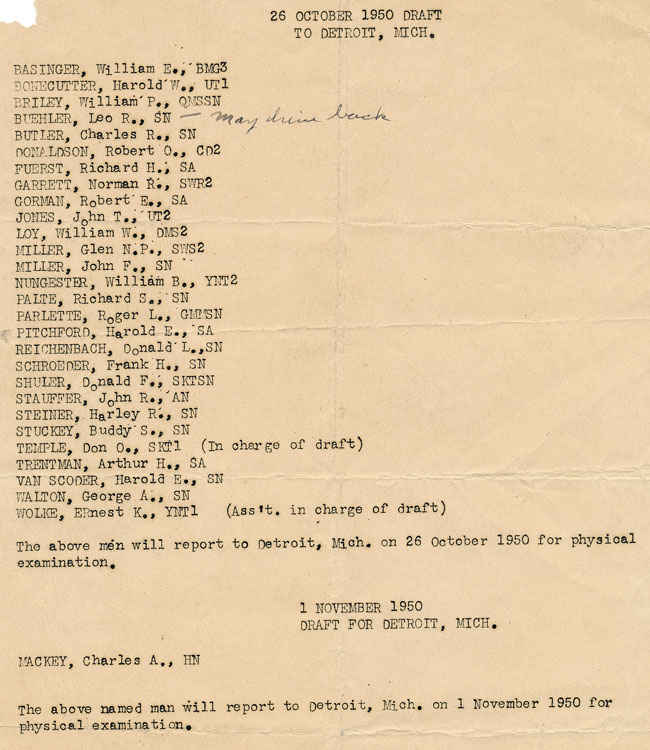
|
To the left Bailey, Monroe, Kelly, my grandfather.
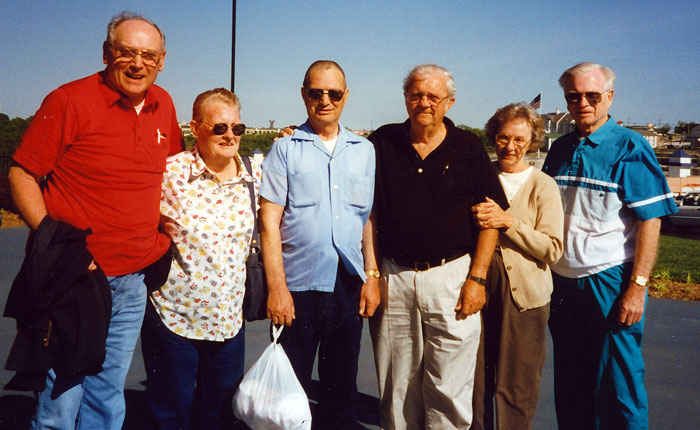
|
| |
October 14, 1950 active duty notification.
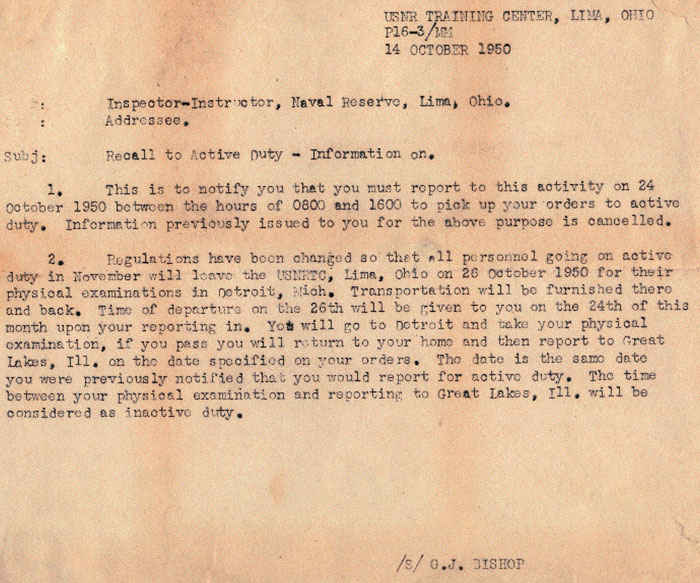
|
Boyer at my grandfather's desk.
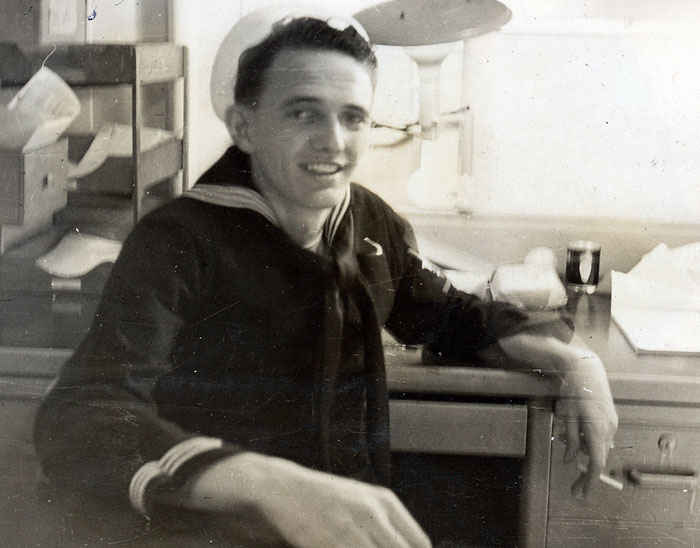
|
Sasebo, Ginza Japan on market street.
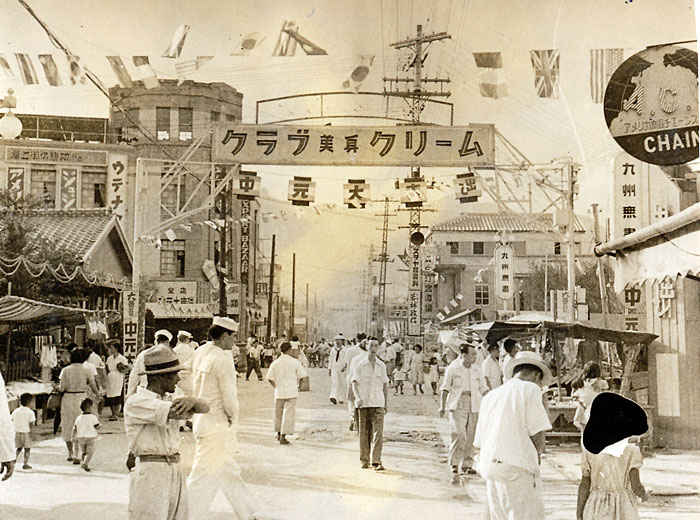
|
| |
1952 back from San Francisco and Korea, in Chicago on the way home to Ohio.
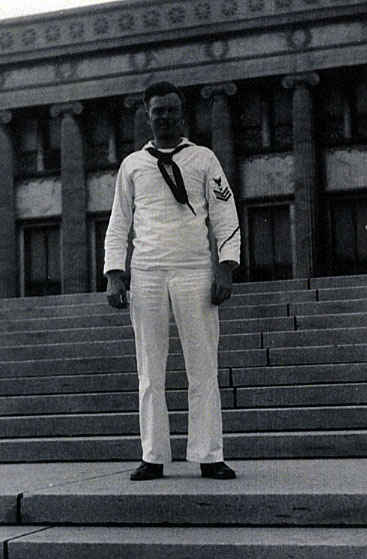
|
Earl Kelly on the Bridge phone.
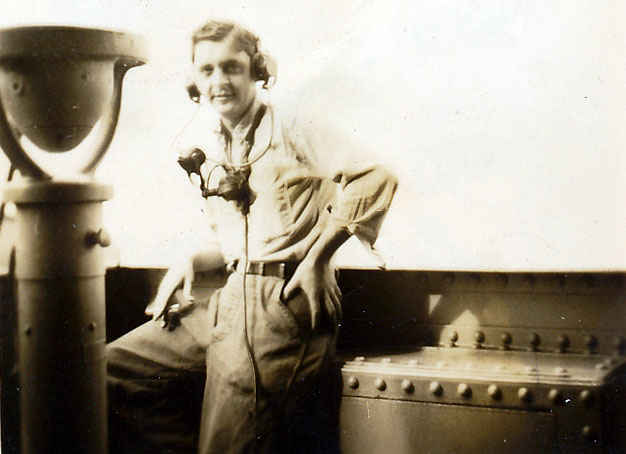
|
Earl Kelly to the left, grandfather to the right. (Rusty is the little guy at the bottom) Earl taught my grandfather everything he needed to know in the Navy and were best friends. You see, my grandfather joined the Navy for a job and the agreement was that we would get the same rank as he had in the Army (Technical Sergeant) which equals a Third Class Petty Office in the Navy. My grandfather never had any training for the Navy and when the Korean War broke out they sent him straight to active duty. Luckily, for my grandfather Earl Kelly was a great guy and taught my grandfather everything he needed to know which Earl did not have to do since he was a First Class Petty Officer (lower rank). Earl ended up making a career in the Navy and spent many years in a submarine.
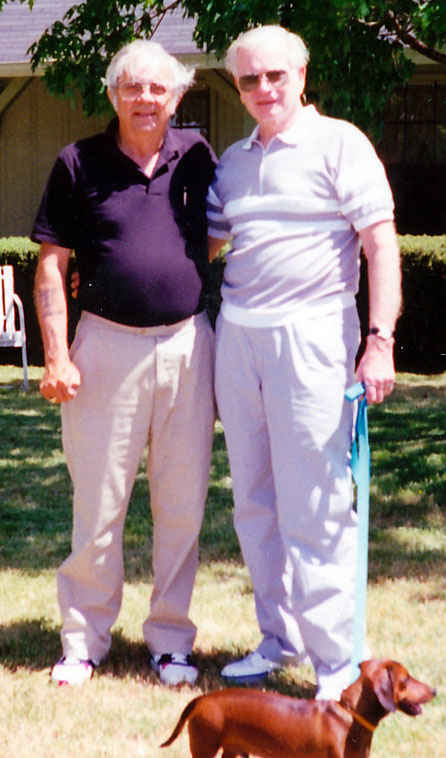
|
| |
Picture of the Leo in the docks of Sasebo, Japan. The Leo and her sister ships practiced night underway replenishment techniques that helped resolve logistical problems.
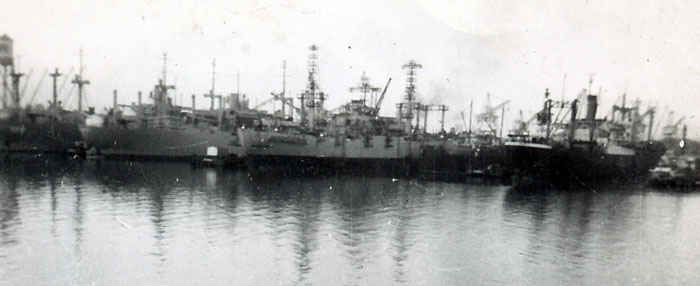
|
In this picture, you can see my grandfather on the bridge, the bombs that are about to be loaded onto a carrier and then the phone lines connecting both ships.
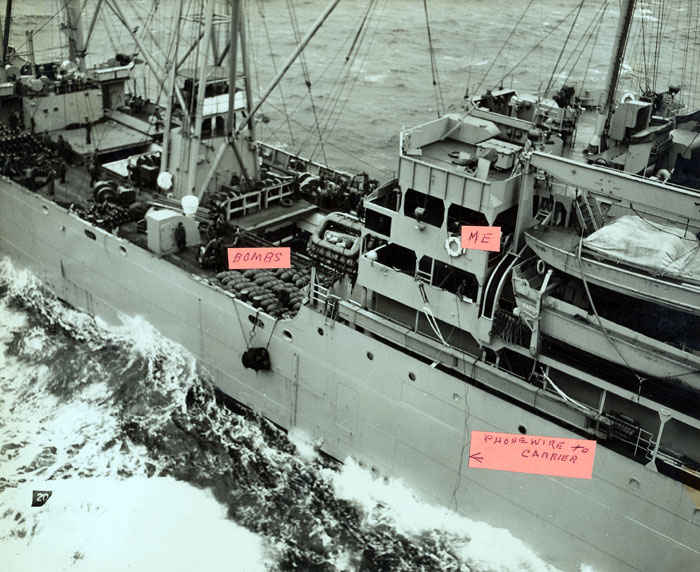
|
Imagine a time before email, phones, or computers. Western Union was the way to communicate and this is was state of the art during its day. This a message my grandfather sent to my grandmother.
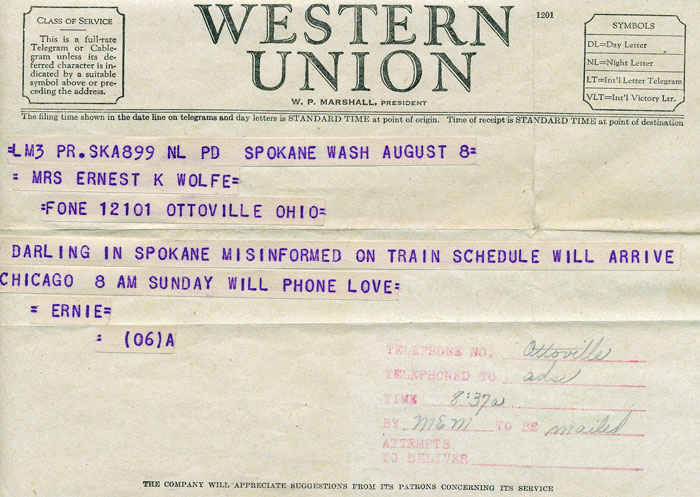
|
| |
This a picture of gun powder aboard the Leo. This is only part of the load.
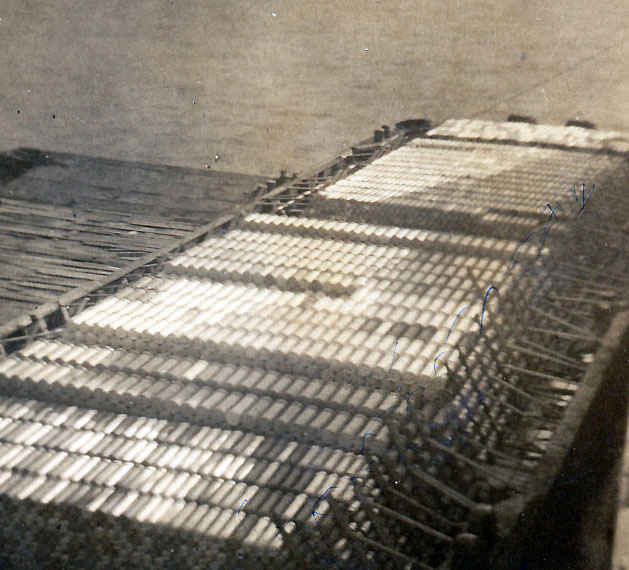
|
Here is the front of a Korean War Navy review. Notice that my grandfather received perfect ratings in all categories except for knowledge and this is understandable since he never received a day of training before he went on active duty. Keep reading to find that story.
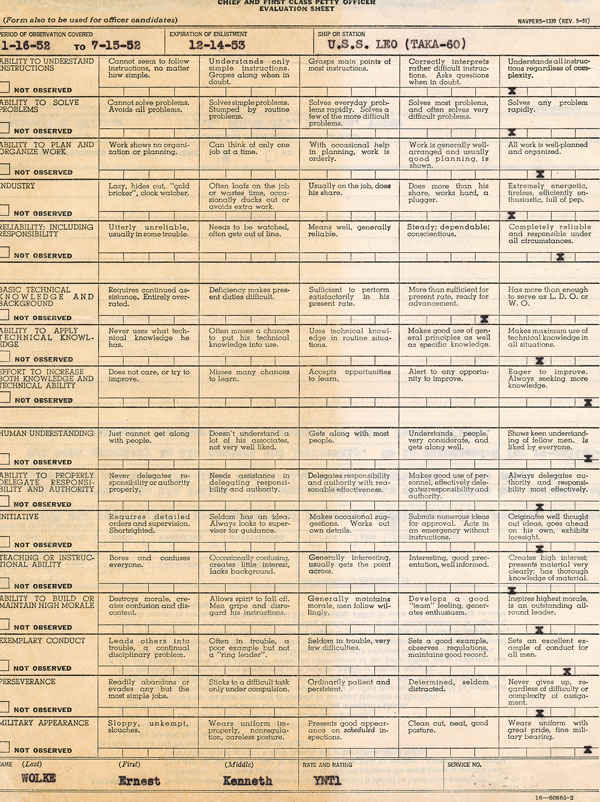
|
I think this is one of the coolest items I have from my grandfather. This is performance review conducted by his commanding officer, Captain Nolan.
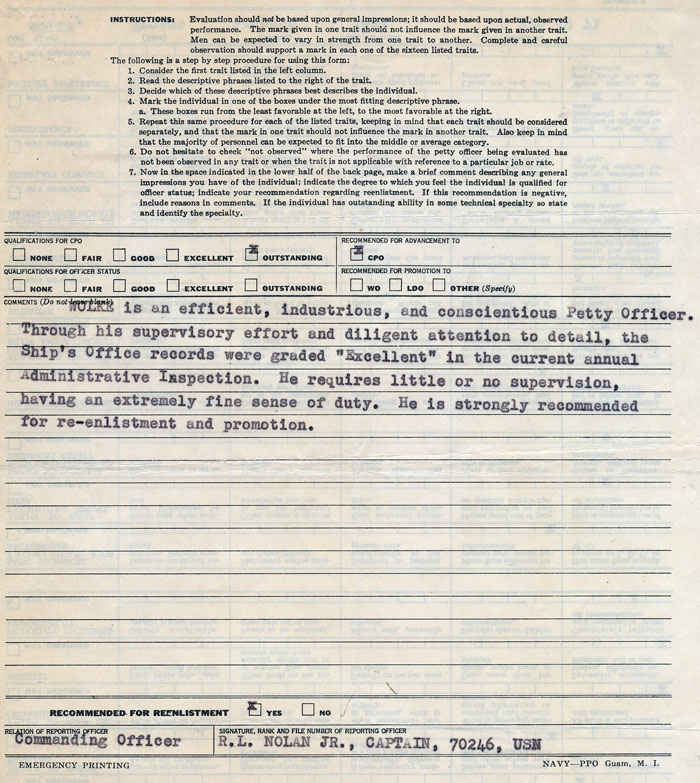
|
| |
This is how a service man would send back items they received while on active duty. We still have the dishes sent back from Japan.
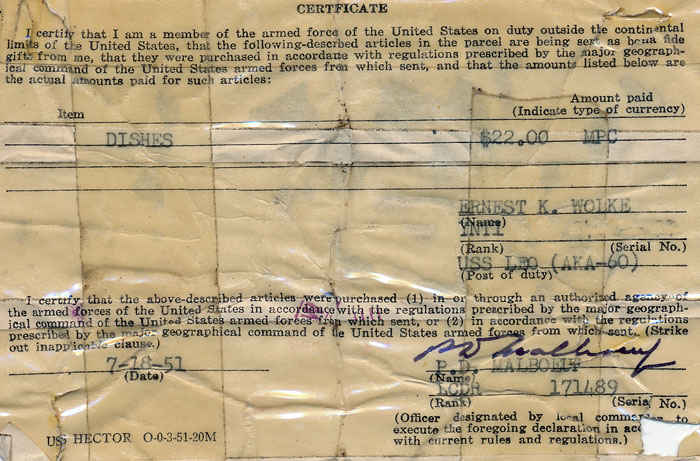
|
On the bridge talking on the phone. My grandfather spent much of his day here.
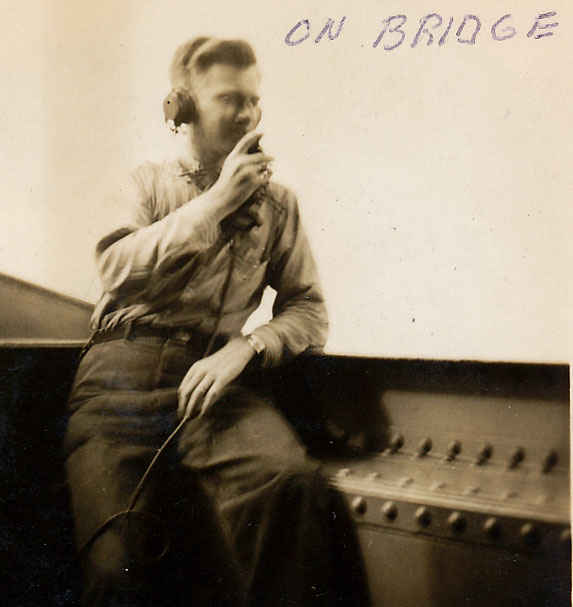
|
To the left Donnel, Armstrong, Lewis, Chopp.
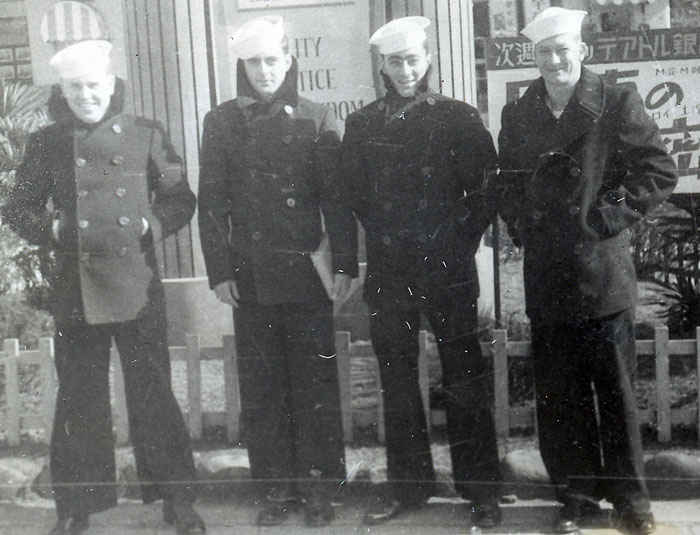
|
| |
On the desk of the USS Leo during the Korean War.

|
Loading ammunition to the USS Boxer.
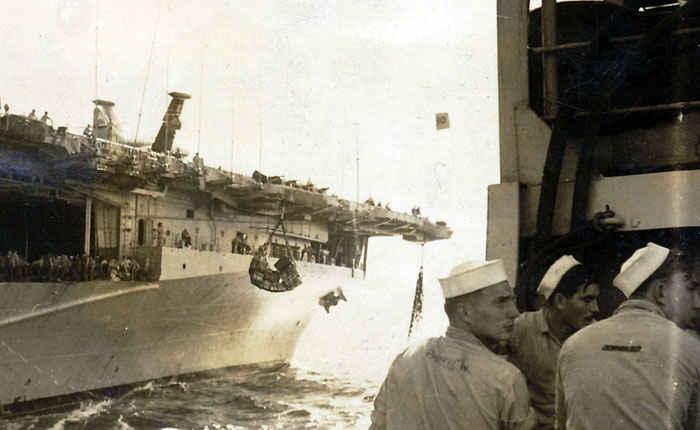
|
This how sailors would be transferred from ship to ship or ship to dock at different points in time. A smaller boat be lifted out of the Leo and put in the water then could dock aside her and allow for the transport of sailors.
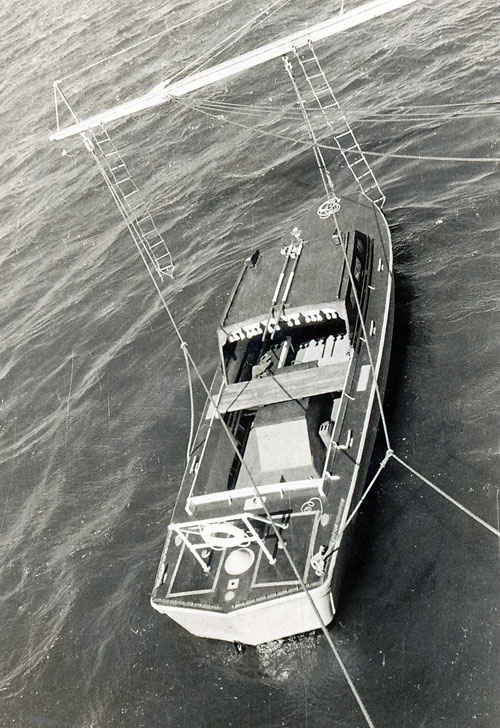
|
| |
Daily newspaper from July 29, 1951 that my grandfather got in Sasebo, Japan. With the outbreak of the Korean War, she was pressed into service to carry planes to the fighting.

|
Sacred order of the Golden Dragon. This was given to everyone whenever they passed the 31 degree Latitude north.
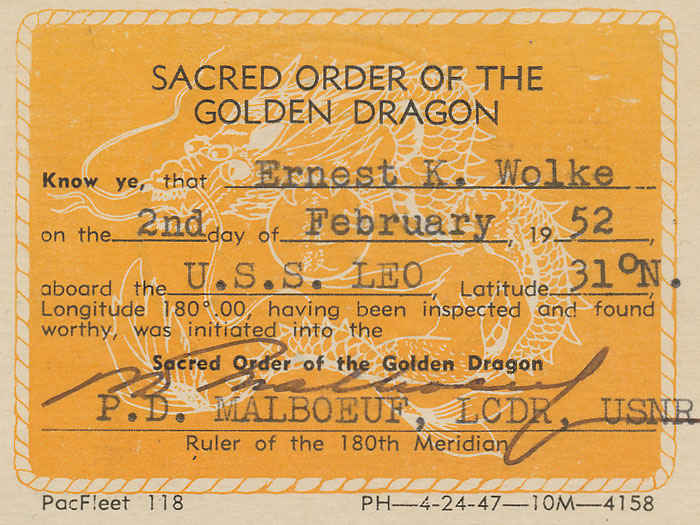
|
To the left Jim Merrill, Ray Bailey, Merle Monroe, Ernie Wolke, Earl Kelly

|
| |
Damage to the USS Leo when a destroyer ran into her.

|
Loading a 16-inch shell for a battleship. Look at the man standing to the right and compare him to the size of this shell. Imagine one of these being fired from a gun, wow.
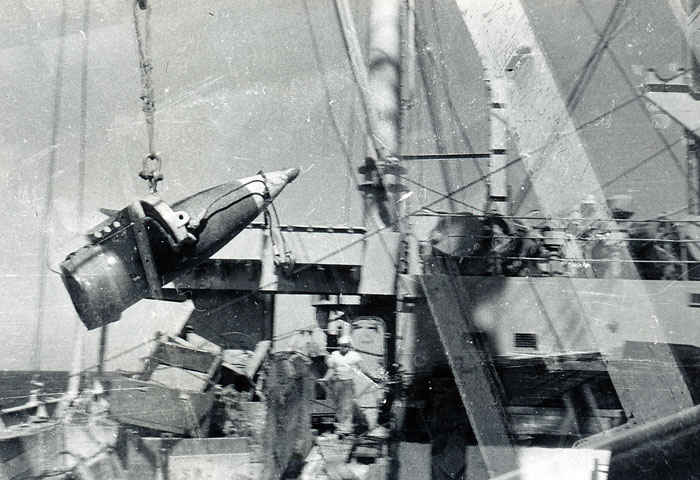
|
Here is an authentic Armed Forces Liberty pass. One better not get caught off the ship without one of these in their pockets.
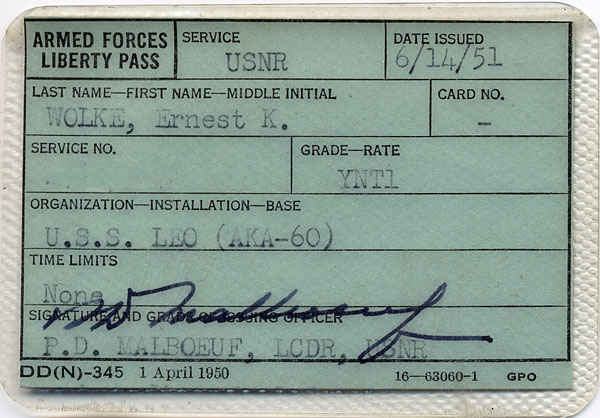
|
| |
Since my grandfather was in the Army and received ribbons, it is actually possible to wear his Army medals on his Navy uniform. I think this is pretty amazing as I do not know of another person who has served in more than one branch.
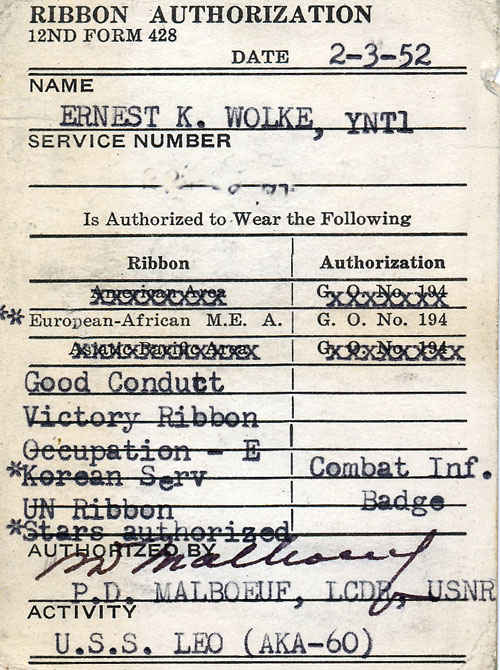
|
One of the numerous ships that my grandfather saw as he was on duty. This is the British HMS Cossach.
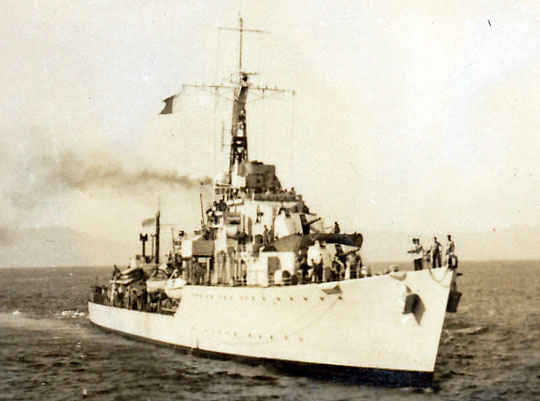
|
This is a picture of my grandfather and grandmother shortly before leaving to go to Detroit then Chicago, then San Francisco, then Korea.
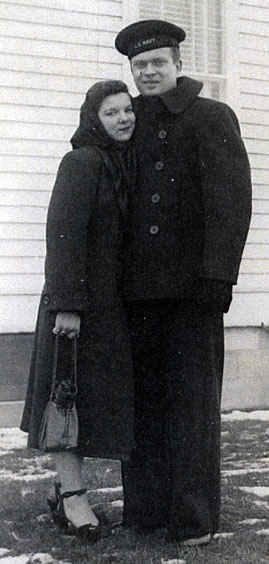
|
| |
I think this is one of the coolest pictures. Look in the middle of the picture front, it is the captain, then look 2 people behind him, that is my grandfather. He followed the captain around everywhere and he was not kidding.
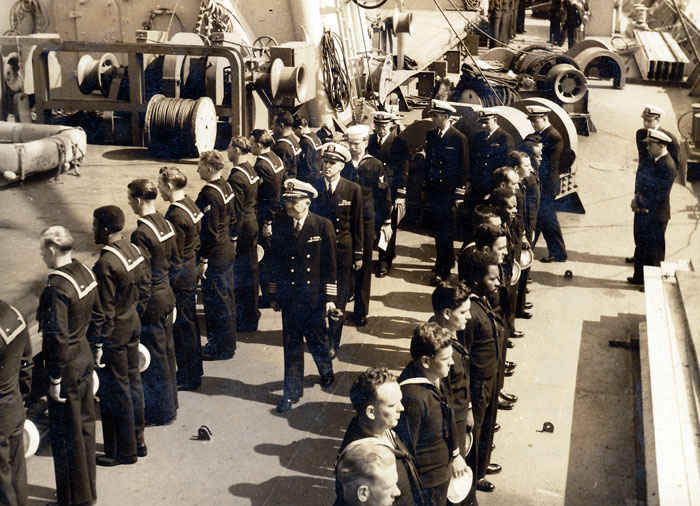
|
Loading ships full of ammunition at sea was never, a routine task as one can see in this picture, a disaster could happen at anytime via a rogue wave, wind or complacency.

|
In order to transfer ammunition at sea, a line would be shot across one ship to the other then large cables would be attached for the transfer. At times even a man would be transferred at sea.

|
| |
USS Leo going under the Golden Gate bridge to serve in the Korean War.

|
Here is a classic sailor term "taking a dip", as seen in this picture the Destroyer's bow is going way into the water.

|
Here is a classic sailor term "coming from a dip", as seen in this picture the Destroyer's bow is coming way out of the water.
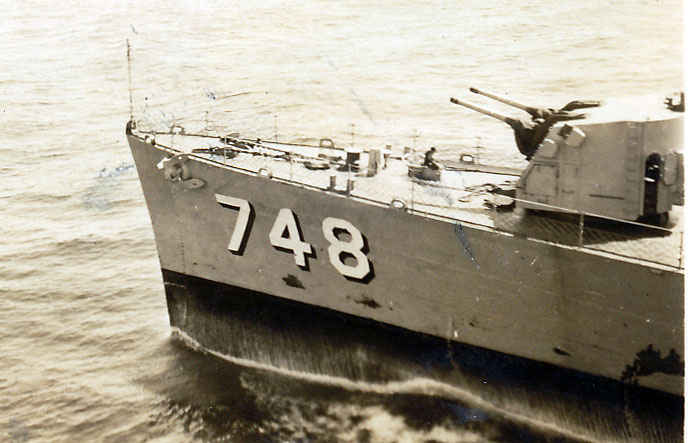
|